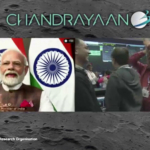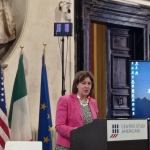The world is changing rapidly. Until not long ago, the United States of Barack Obama, in the role of the virtuoses, pressed on India and China, the “big polluters”, to renew their environmental policies and join the ranks of countries engaged in combating climate change. The Paris COP 21 agreement, which was signed in 2015 by all the major players in the game, had, despite the many downward compromises, represented a favorable outcome for environmental issues and a success of the American democratic administration.
Less than two years later, Trump is ready to get out of the agreement, and India and China are willing to lead the fight against pollution, without saving sharp criticism to the new presidency’ choices.
None of the two countries, however, seems to be ready to assume a real leadership in the fight against global warming and fill the void that will inevitably be left by USA discharge.
The two Asian governments are gradually taking on more strong positions, on the public level as well, against fossil fuels, as their respective populations are going to directly suffer, more and more, from the adverse effects of climate change and poisoning of natural resources. Beyond reassuring positions, China and India are, at least for now, unable to offset the strong weakening of the economic incentive system the US offered to developing countries in exchange for a greater control over their levels of pollution.
The change of route in Asia is, however, evident and should not be underestimated. For decades, the governments of India and China had looked with suspicion and annoyance at the appeals of the first world countries for a reduction in polluting emissions. The countries which have based their development on wild industrialization without posing too much doubts about the climatic consequences, asked the poorer countries to limit their growth capabilities to preserve the health of the planet. What pulp came from the sermon?
Today, however, both Indian President Modi and his Chinese counterpart Xi Jinping seem to have adopted a different vision of the world. Modi called a “morally criminal act” to not stick to the commitments assumed on the climate front. Jinping addressed all signatories to the COP 21, recalling that it represents “a responsibility we must assume for future generations”.
Trump’s choice could have dramatic consequences for that same future. In addition to the reduction in economic incentives and technological equipment supplies (the US alone would have to contribute for about 20% of the total), American withdrawal could entice other countries to do the same. The Paris agreement, moreover, had been considered by many to be a downward result, unable to effectively contain global warming in the coming years. There would be much more substantial emissions cutbacks in order to reverse the route, but the American turnaround may also weaken the current deal, encouraging more hesitant states to loosen the ties of their engagement.
The United States is also the second most polluting country in the world, and with the Paris agreement they pledged to reduce 26 to 28% of greenhouse gas emissions by 2025. Without their contribution, experts are asking, will it be possible to meet the objective of limiting the rise in temperature, compared to the pre-industrial era, below the two degrees, as established by the Paris Agreement?
It’s hard to say, but things are neverthless moving. If India is committed to meeting its objectives, despite the fact that 240 million people in the sub-continent still have no access to electricity, China seems to have rapidly traveled to its commitments and started a financing project on the renewable energies ($ 360 million by 2020) that makes the Asian giant the new industry leader, globally.
New environmental policies, according to scholars, have already begun to have some tangible consequences in the two countries. China has slowed down its consumption of carbon and India is about to reduce its construction projects for new coal-fired power plants. New Deli then accelerated investments in wind and solar energy, moving to the target set for 2022: to bring its capacity from renewable sources to 175 gigawatts.
The words of Indian Energy Minister Piyush Goya sound clear and strong: “We are not addressing climate change because somebody told us to do it, it is an article of faith for this government .”
The jibe for the most industrialized countries is also a paradigm shift: “Sadly the developed world does not show the same commitment to fulfill their promises, which could help speed up the clean energy revolution .”
Will the Asian powers therefore be able to fill in the American shortages and load this revolution on their shoulders? The commitment is evident but the economic problem remains. American leadership on the environmental front, in the Obama era, was expressed through a $ 3 billion loan in favor of the poorest countries to support them in the development of alternative energies. This fund has been reduced by two-thirds by Trump and neither Beijing nor New Delhi intend to put all this money on the table. Rather, the two giants seem willing to play a coordinating and addressing role, strengthening the sharing of technology-based knowledge among the nations involved.
Using the words of Varad Pande, an ex-consultant at the Indian Ministry of Energy, the one that is being built today “will be a different flavor of leadership“.
Intense and spicy, hopefully, like curry.







